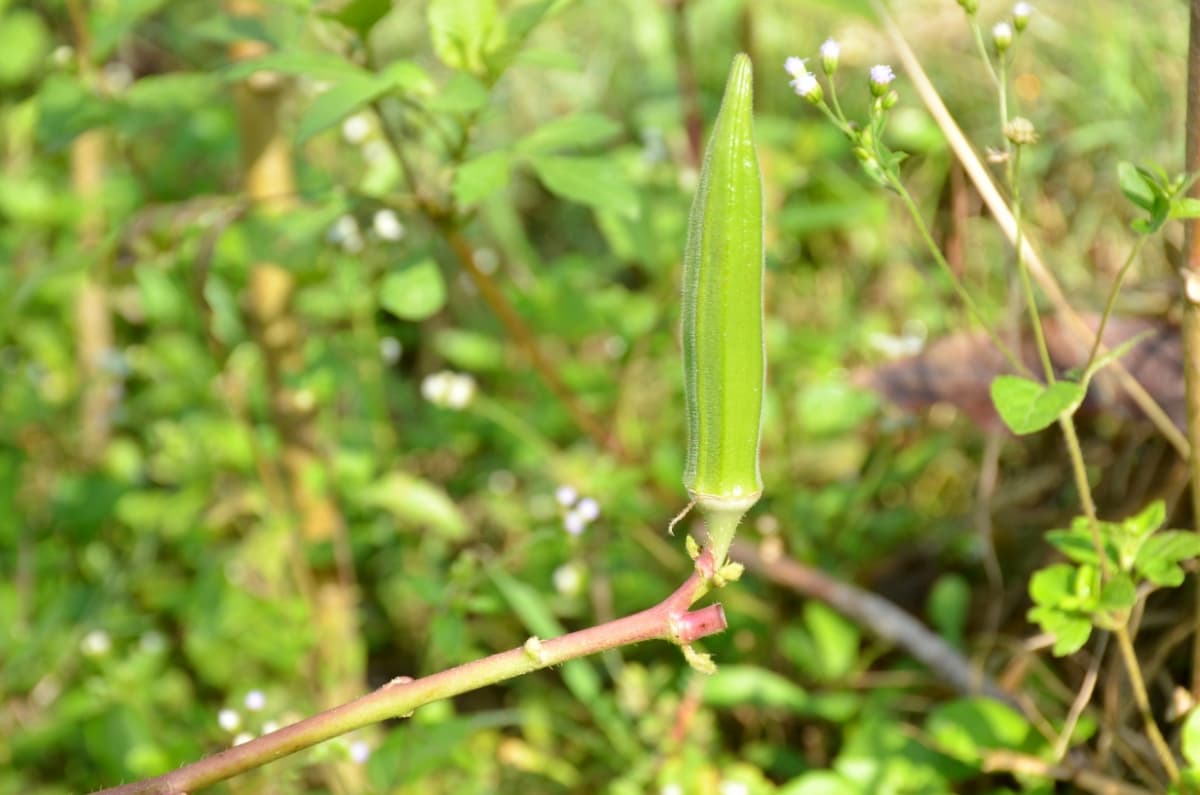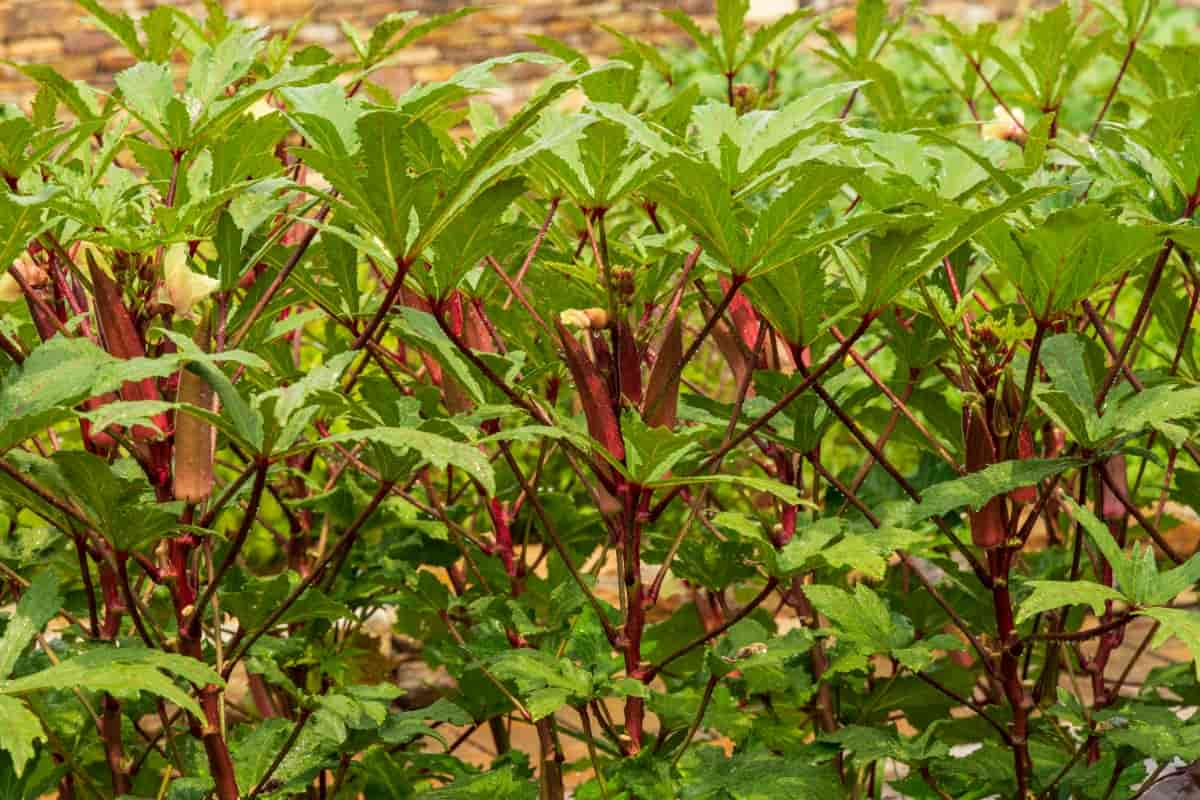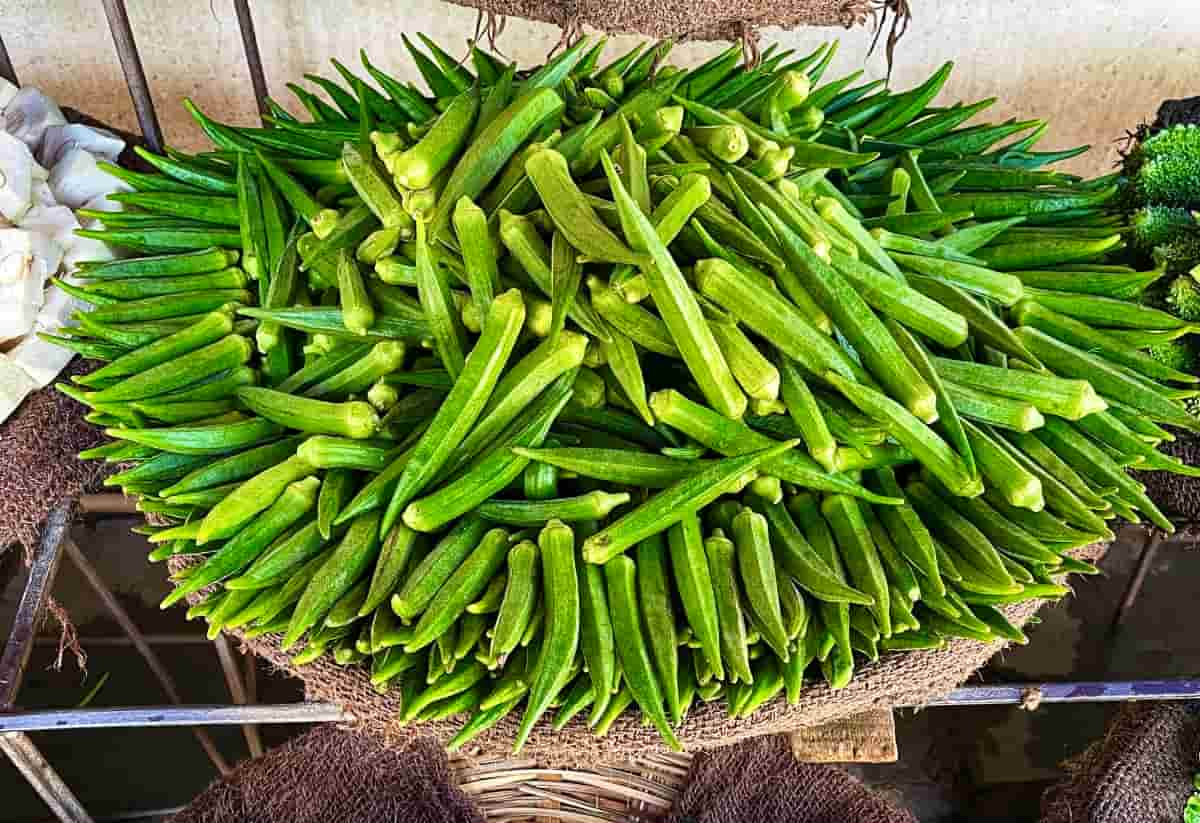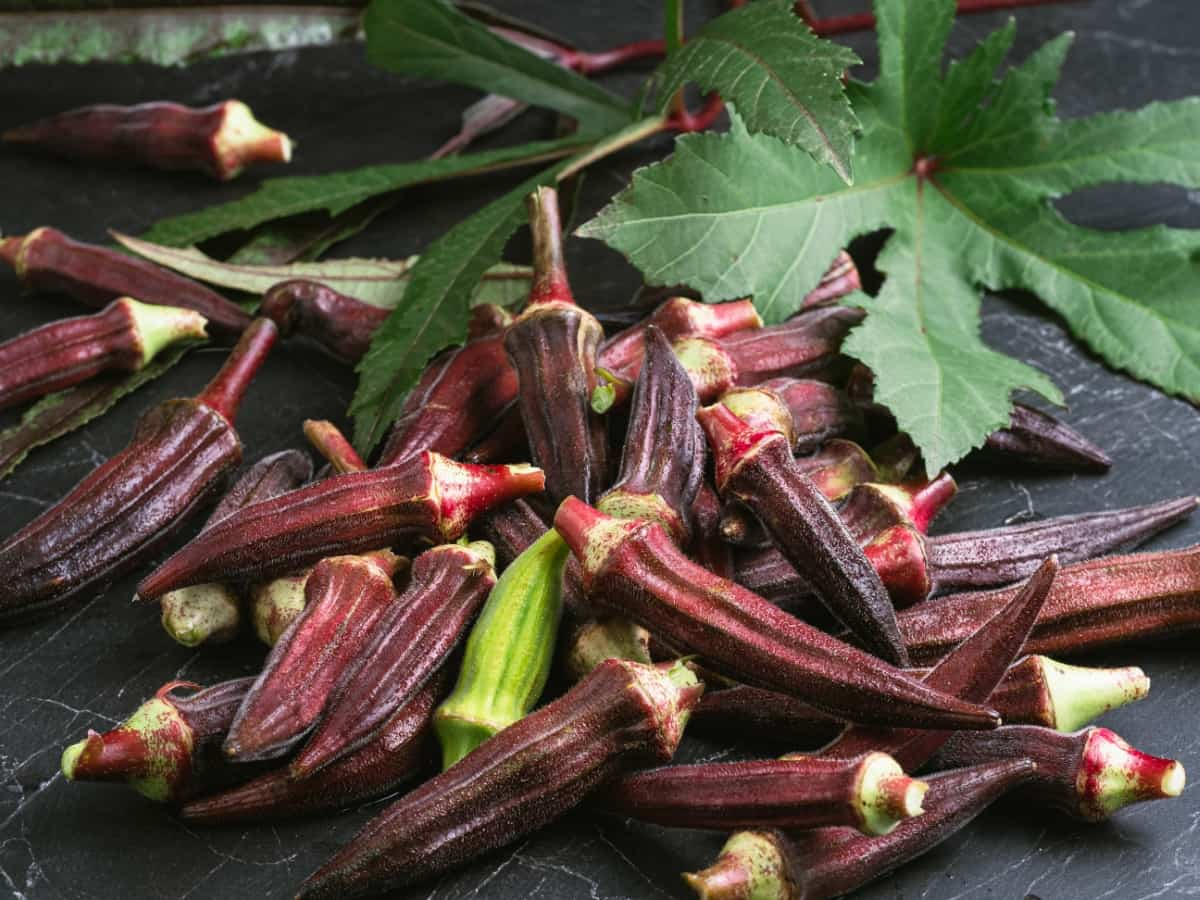Yellow Vein Mosaic in Okra presents a significant challenge in cultivation. Characterized by intricate symptoms, including vein yellowing and mosaic patterns on leaves, its identification is crucial for farmers. Employing Integrated Pest Management (IPM) strategies is paramount. The disease cycle involves viral transmission through insect vectors.

Epidemiologically, the virus spreads rapidly, impacting Okra yield. To counter this, preventive measures are pivotal. Effective control and treatment methods are imperative, emphasizing early detection and elimination of infected plants.
Yellow Vein Mosaic in Okra
Introduction to Yellow Vein Mosaic in Okra
Okra, also known as bhindi, is a popular vegetable crop grown tropical, subtropical areas of the world. It is valued for its edible green pods, rich in fiber, vitamin C, and antioxidants. However, okra production is often affected by various diseases, among which yellow vein mosaic is the most destructive one. Yellow vein mosaic disease (YVMD) is caused by a virus that infects the leaves and reduces plant growth and yield.
Historical and Economic Significance
Yellow vein mosaic disease was first reported in India in 1924 by Kulkarni, who observed the characteristic yellow network of veins on the leaves of infected okra plants. Since then, the disease has spread to other countries in South Asia, Africa, and the Middle East.
YVMD is considered the major limiting factor of okra production, causing up to 96% yield loss if the plants are infected at an early stage. The disease also affects the quality of the pods, making them small, malformed, and yellowish-green. The economic impact of YVMD is estimated to be around $1 billion per year worldwide.
Causal Agent and Disease Cycle: Identifying the Virus Responsible
The causal agent of YVMD is a virus belonging to the genus Begomovirus, family Geminiviridae. The virus has a circular single-stranded DNA genome that is encapsidated in a geminate particle. The virus is transmitted by a whitefly vector, Bemisia tabaci, which acquires the virus from infected plants and inoculates it in healthy ones.
Lifecycle of the Yellow Vein Mosaic Virus
The virus can also survive in several weed hosts, such as Croton sparsiflora, Malvastrum tricuspidate, Ageratum sp., and Hibiscus tetraphyllus. The virus replicates in the nucleus of the plant cells and moves systemically through the phloem. The disease cycle is influenced by environmental factors such as temperature, humidity, rainfall, and cropping patterns.
In case you missed it: How to Control Okra Leaf Spot Naturally: How to Get Rid of This with Natural and Organic Treatment

Symptoms and Diagnosis
Early Stage Symptoms
The initial symptoms of YVMD appear on the young leaves as vein clearing and vein chlorosis. The small veins near the leaf margins become transparent or yellowish, forming a network pattern. The leaf lamina remains green at this stage.
Advanced Disease Manifestations
As the disease progresses, the entire leaf becomes yellow except for a few green patches. The veins become thickened and raised, especially on the lower surface of the leaf. The leaf size and shape are also distorted. The infected plants show stunted growth and reduced branching. The flower buds may drop or fail to open. The pods become dwarfed, twisted, and discolored.
Diagnostic Techniques
The diagnosis of YVMD can be done by observing the symptoms on the field or by using laboratory methods such as serological tests (ELISA), molecular tests (PCR), or electron microscopy (EM). Serological tests can detect the presence of virus-specific antibodies in plant sap samples. Molecular tests can amplify and identify the virus DNA from plant tissue samples. Electron microscopy can visualize the virus particles in leaf sections or purified preparations.
Epidemiology of Yellow Vein Mosaic
YVMD is a disease that affects okra cultivation in tropical and subtropical areas, with reports from countries like India, Pakistan, Sri Lanka, Bangladesh, Nepal, Myanmar, Thailand, Malaysia, Indonesia, Philippines, China, Taiwan, Japan, Korea, Vietnam, Cambodia, Laos, Iran, Iraq, Saudi Arabia, Yemen, Oman, UAE, Egypt, Sudan, Ethiopia, Kenya, Tanzania, Uganda, Rwanda, Burundi, Zambia, Malawi, Mozambique, Zimbabwe, South Africa, Nigeria, Ghana, Togo, Benin, Burkina Faso, Mali, Senegal, Gabonia, Guinea.
Sierra Leone, Liberia, Ivory Coast, Cameroon, Gabon, Congo, Angola, Madagascar, Madagascar, Mauritius, Reunion Island, and Brazil. The disease’s spread is influenced by environmental factors such as temperature, humidity, rainfall, and cropping patterns. Warm and humid conditions are more severe, while rainy seasons are more prevalent. Cropping patterns, such as intercropping, mixed cropping, or monocropping, can also affect the disease.
Impact on Okra Crops: Effects on Plant Growth and Yield
YVMD has a negative impact on okra crops, affecting both plant growth and yield. The infected plants show reduced photosynthesis, respiration, transpiration, and nutrient uptake. The infected plants also show reduced flowering, fruiting, and seed production. The yield loss due to YVMD can range from 10% to 96%, depending on the stage of infection, the severity of symptoms, and the cultivar of okra.
The quality of the pods is also affected by YVMD, making them small, malformed, and discolored. The pods become unmarketable or fetch a low price in the market. The economic consequences for farmers are significant, as they lose their income and incur additional costs for disease management.
Disease Management Strategies: Cultural, Chemical, Biological Control Approaches
The management of YVMD can be achieved by using various strategies, such as cultural control methods, chemical control options, and biological control approaches. Cultural control methods include:
- The use of resistant or tolerant varieties of okra.
- The use of certified or disease-free seeds.
- The removal, destruction of infected plants and weed hosts.
- The adoption of crop rotation and field sanitation practices.
- The adjustment of planting time and spacing.
- The avoidance of excess irrigation and fertilization.
Chemical control options use insecticides to control the whitefly vector such as dimethoate or monocrotophos. However, chemical control has some limitations, such as environmental pollution, human health hazards, resistance development, and non-target effects.
Biological control approaches include using natural enemies to control the whitefly vector, such as predators (e.g., ladybird beetles), parasitoids (e.g., Encarsia formosa), or pathogens (e.g., fungi or bacteria). However, biological control has some challenges, such as low efficacy, high cost, and limited availability.
Preventive Measures: Crop Rotation and Field Sanitation
The best way to prevent YVMD is to adopt preventive measures, such as crop rotation, field sanitation, and resistant varieties of okra. Crop rotation and field sanitation can reduce the source of virus inoculum and vector population by breaking their life cycle. Crop rotation involves growing non-host crops in between okra crops, such as cereals, legumes, or vegetables.
In case you missed it: How to Get Rid of Aphids on Okra Naturally: How to Control with Natural and Organic Treatment

Field sanitation involves removing and destroying infected plants and weed hosts from the field before planting or after harvesting. Resistant varieties of okra can resist or tolerate the virus infection and show less or no symptoms. Some resistant varieties of okra are Parbhani Kranti, Arka Anamika, Pusa Sawani, and VRO-6.
Integrated Pest Management (IPM): Role of IPM in Controlling Yellow Vein Mosaic,
Integrated pest management (IPM) is an approach that combines various methods to control pests and diseases in an economical, environmentally friendly, sustainable way. The role of IPM in controlling YVMD is to reduce the incidence and severity of the disease by reducing the virus inoculum and vector population. The IPM strategies for YVMD include
- Using resistant or tolerant varieties of okra
- Using certified or disease-free seeds
- Removing, and destroying infected plants and weed hosts
- Adopting crop rotation and field sanitation practices
- Adjusting planting time and spacing
- Avoiding excess irrigation and fertilization
- Using insecticides judiciously to control the whitefly vector
- Using natural enemies to control the whitefly vector
- Monitoring the disease situation regularly
- Educating farmers about the disease symptoms and management options
In case you missed it: How to Control Okra Root-Knot Nematode Naturally: How to Get Rid of This with Natural and Organic Treatment

Conclusion
Combating Yellow Vein Mosaic in Okra demands a proactive stance. Early symptom identification is key. Implementing rigorous control measures and treatments, along with integrated pest management, ensures a resilient defense against this challenging viral affliction in Okra cultivation.
- Beneficial Insects in Pest Management
- Natural Solutions for Pest Control in Flower Gardens
- Types of Fungicides Used in Agriculture
- Common Issues in the Fruit Development Stage of Pomegranate Farming
- Fruit Development Issues in Papaya: Easy Solutions and Treatment
- Soil-Borne Diseases and How to Protect Your Plants
- Practices to Prevent Disease Spread in the Garden
- From Wilted to Thriving: How to Treat Root Rot Naturally in Houseplants
- Natural Remedies to Cure Brown Spots on Fig Tree Leaves